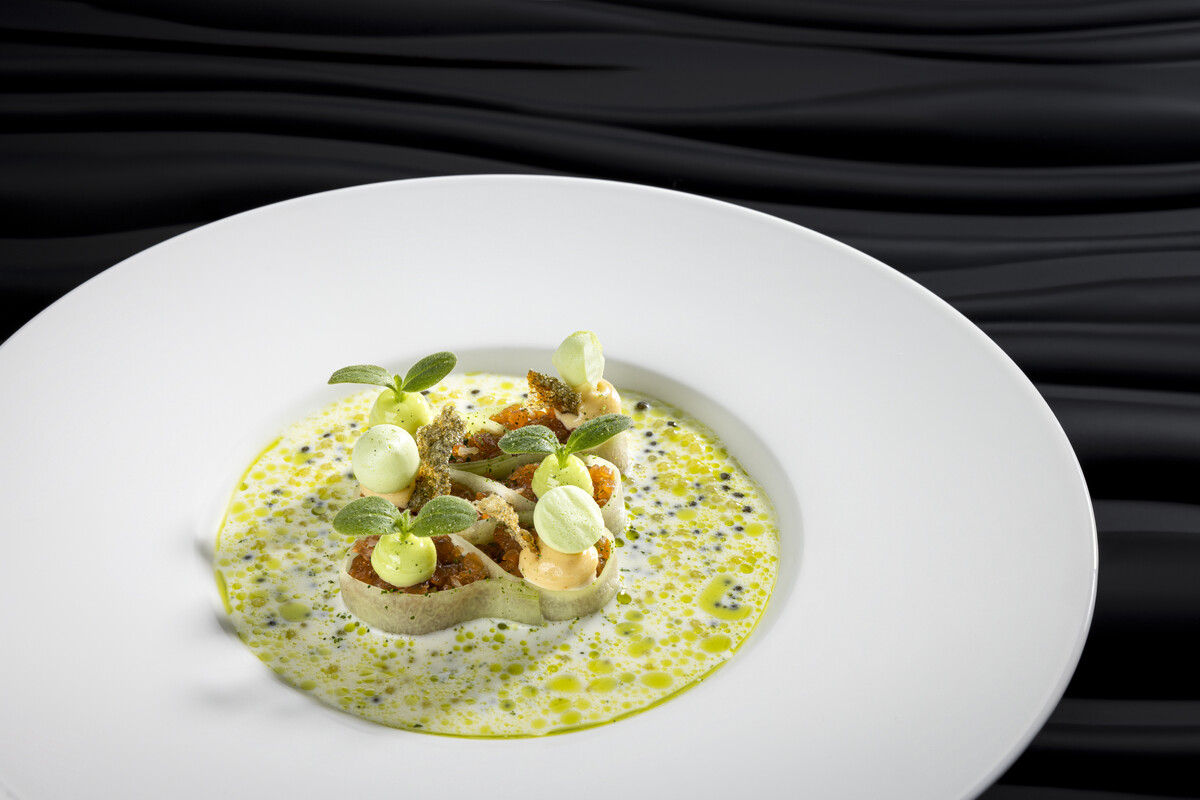Koch Hubert Wallner gehört zu den besten Spitzenköchen Österreichs. Sein Restaurant Hubert Wallner in Dellach - Maria Wörth am Wörthersee verbindet regionale Zutaten mit innovativem Können. Seine Kreationen sind eine Hommage an die Natur und die Traditionen der Alpenregion. Hubert Wallner gibt Einblicke in seine kulinarische Welt und erklärt uns den Unterschied zwischen der Schweizerischen Alpenküche und der Alpen-Adria-Küche.
Was macht die Alpenküche aus?
Die Alpenküche ist wie ein faszinierender Streifzug durch die Vielfalt der Natur. Sie zeichnet sich nicht nur durch ihre reiche kulinarische Tradition aus, sondern auch durch die Verwendung von ungewöhnlichen Zutaten wie Wildkräutern, Wildtieren und essbaren Wurzeln und Pilzen. Es ist ein kulinarisches Abenteuer, sich mit diesen besonderen Produkten zu beschäftigen und daraus köstliche Gerichte zu zaubern.
Wie viel Alpenküche findet sich bei dir im Restaurant?
In unserem Restaurant ziehen wir für Gäste auf kulinarische Weise einen Spannungsbogen. Wir spielen mit Aromen und Geschmacksrichtungen, die von den Gipfeln der Alpen bis hinunter in die Täler reichen. Von Zirbenaromen bis hin zum Curry, das über die Jahrhunderte den Weg zu uns gefunden hat, es ist für jeden Geschmack etwas dabei.
Wie würdest du die Küche im Alpen-Adria-Raum beschreiben? Welche sind typische Gerichte aus diesem Gebiet? Und was sollte man unbedingt kennen oder gegessen haben?
Die Küche des Alpen-Adria-Raums ist wie ein kulinarischer Schmelztiegel, der die besten Zutaten und Traditionen aus Österreich, Slowenien und Italien vereint. Hier geht es um echten Genuss, der von regionalen und nachhaltigen Produkten geprägt ist. Gerichte wie Crudo vom Fisch oder frischen Scampi bringen den wahren Geschmack auf den Teller, denn hier steht das Produkt im Vordergrund, ohne Schischi und Tamtam.

Inwiefern unterscheidet sich die Alpen-Adria-Küche von der klassischen Alpenküche der Schweiz?
Die Alpen-Adria-Küche unterscheidet sich von der klassischen Alpenküche der Schweiz ihren Zugang zu einer breiten Palette von Zutaten. Durch die geografische Lage haben wir hier Zugang zu Salzwasserfischen, Krustentieren und Muscheln, die die Küche noch reicher und abwechslungsreicher machen. Es ist eine Fusion von alpinen und mediterranen Einflüssen, was ich eine einzigartige Kombination finde.
Mit welchen Zutaten arbeitest du derzeit am liebsten und warum?
Ich liebe es, mit Zutaten zu arbeiten, die eine Geschichte zu erzählen haben. Curry hat seinen Weg nach Kärnten gefunden durch den Handel über die Alpen. Ich koche gerne nach dem Rhythmus der Natur und lasse mich von den Jahreszeiten und den frischen Produkten leiten.
Welche Ostergebäcke/Spezialitäten kommen bei euch auf den Tisch?
Zur Osterzeit kommt bei uns die Osterjause mit Schinken, Käse, Eieraufstrich, Kärntner Reindling, Kren und Eier auf den Tisch. Ein Klassiker und wer einmal die Osterjause probiert hat, möchte diese Tradition nicht mehr missen.




